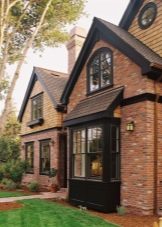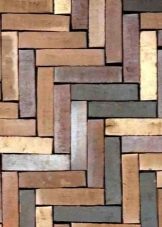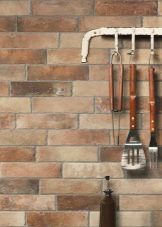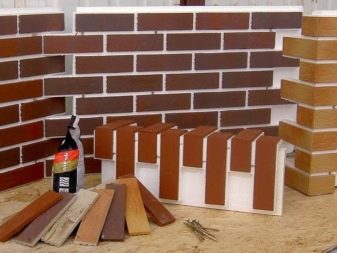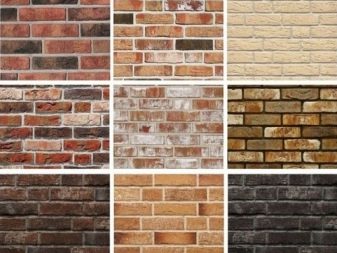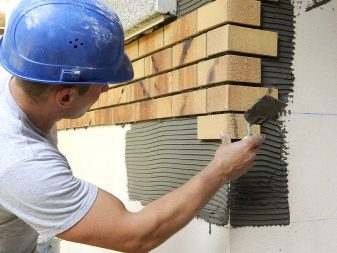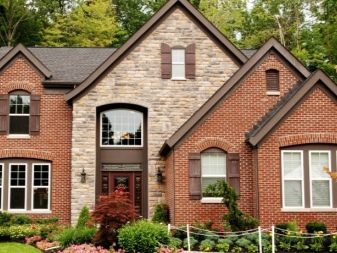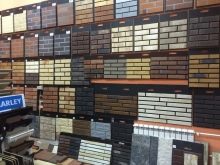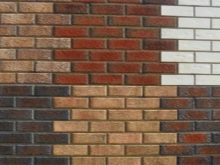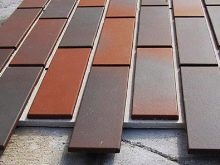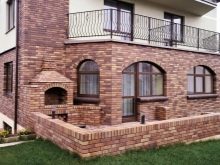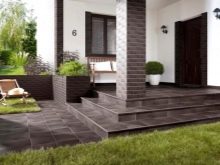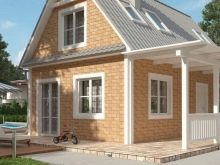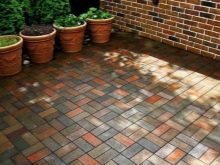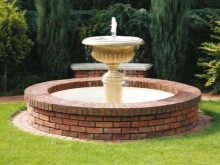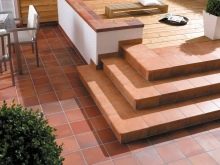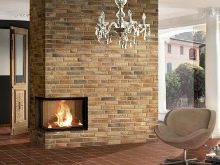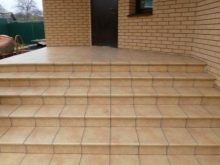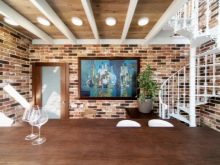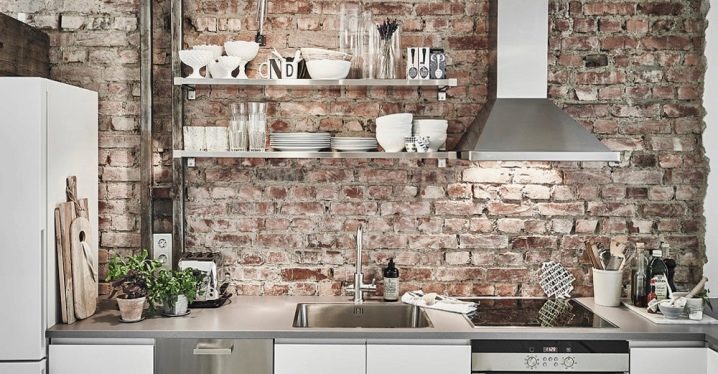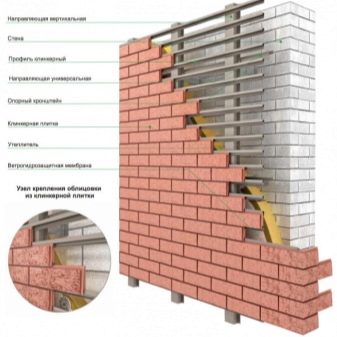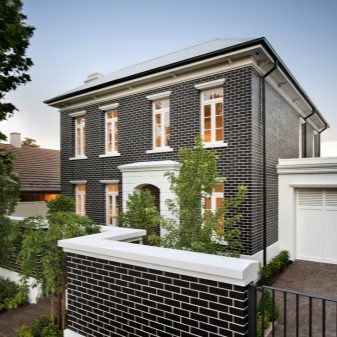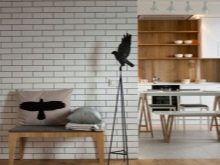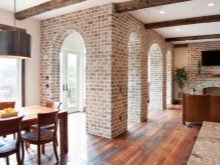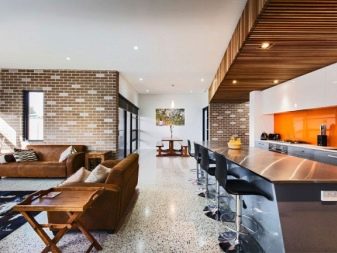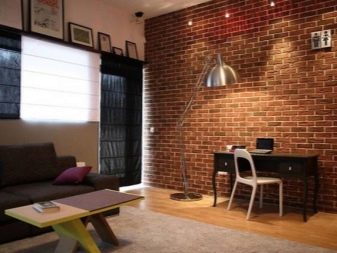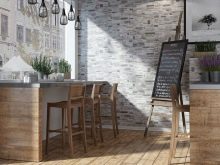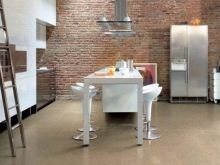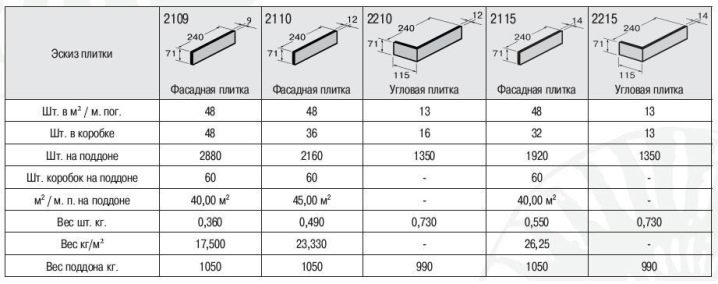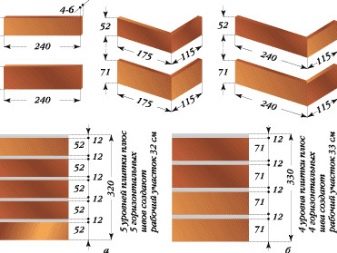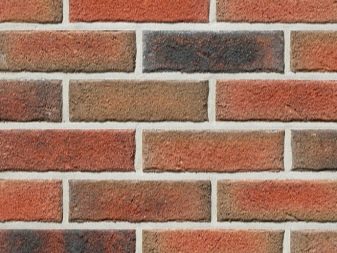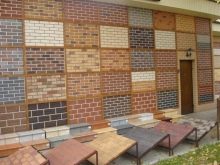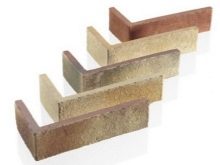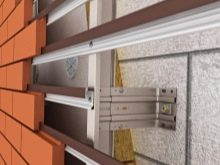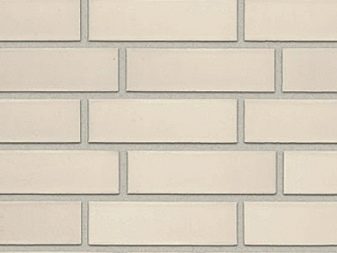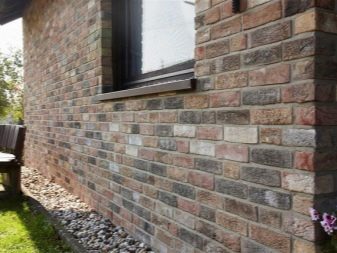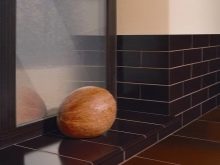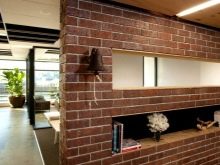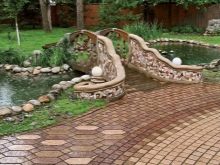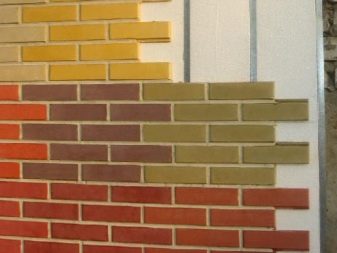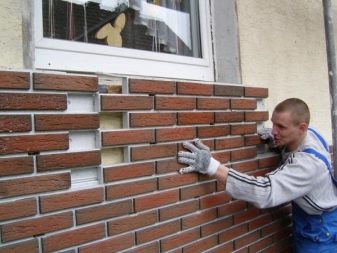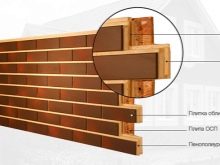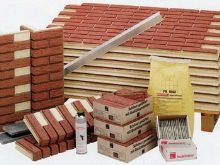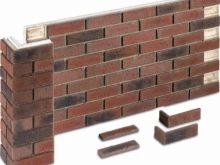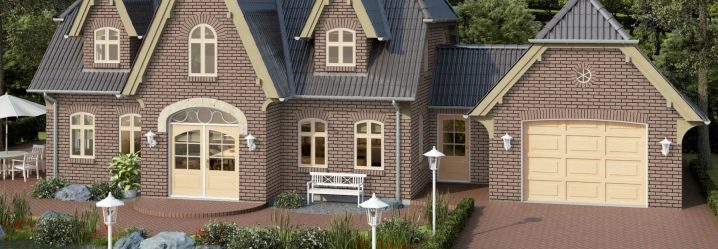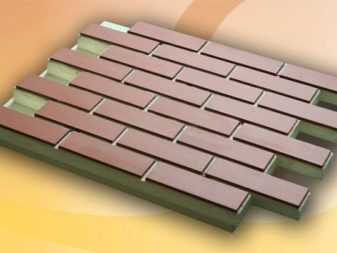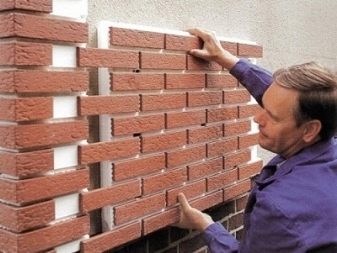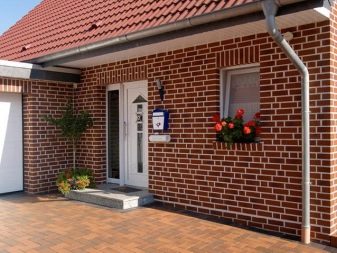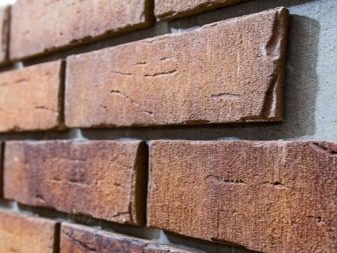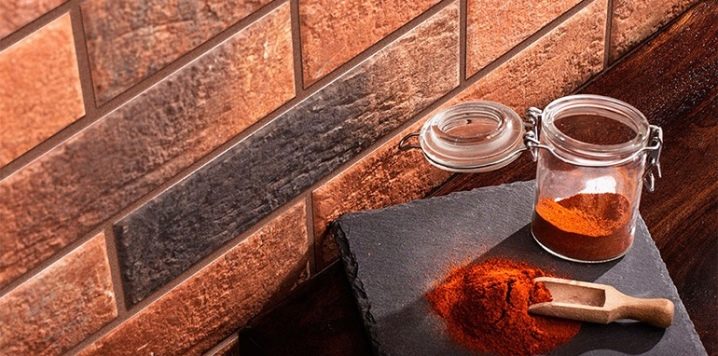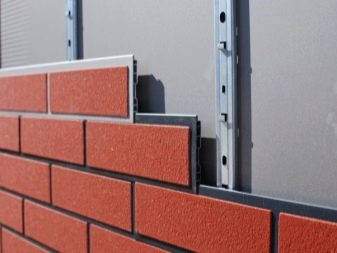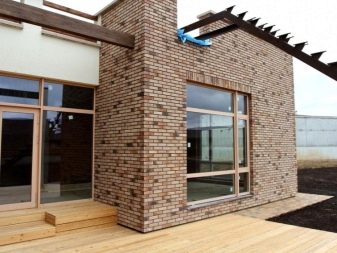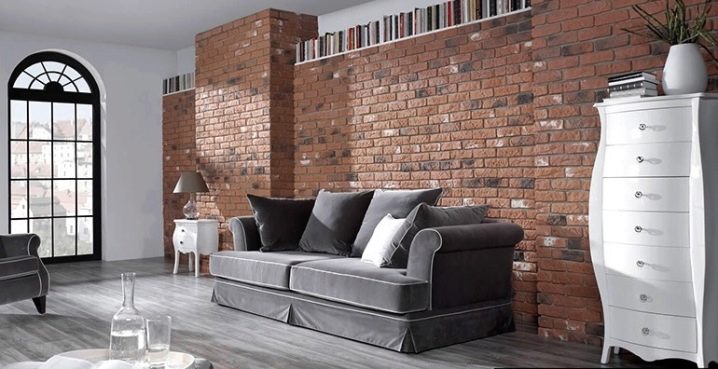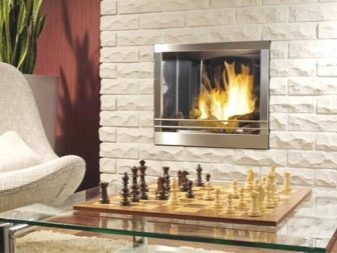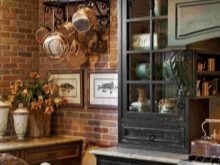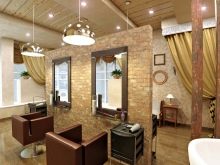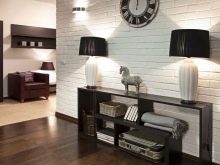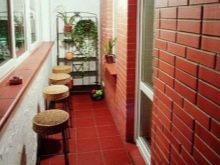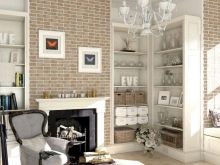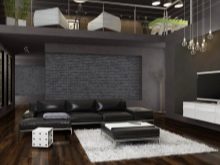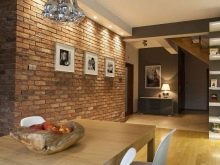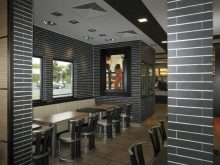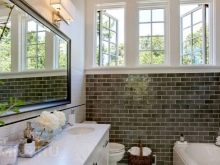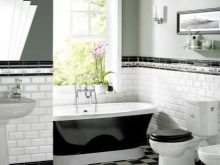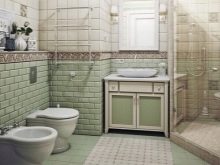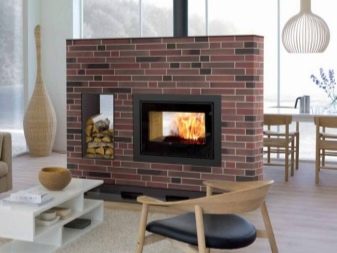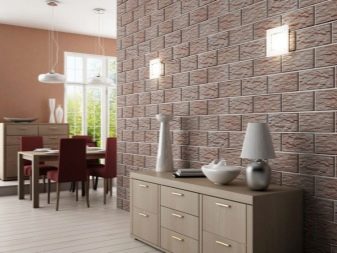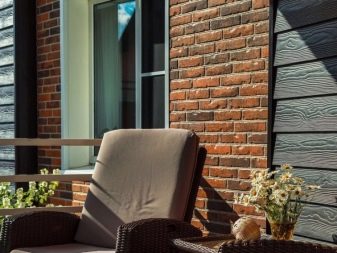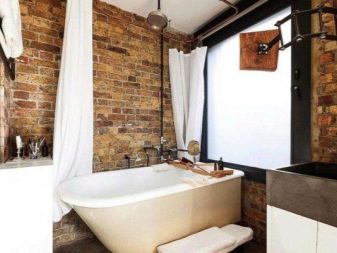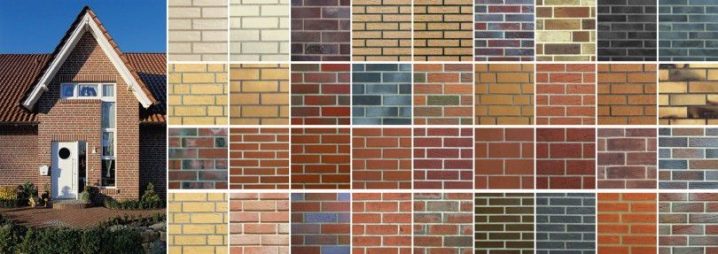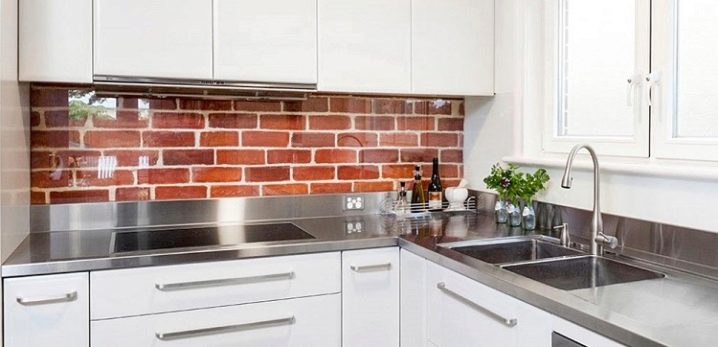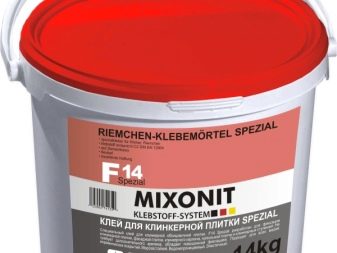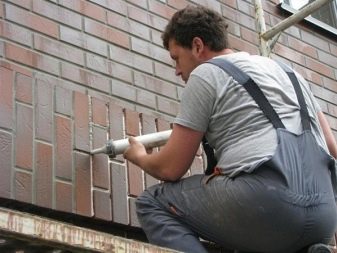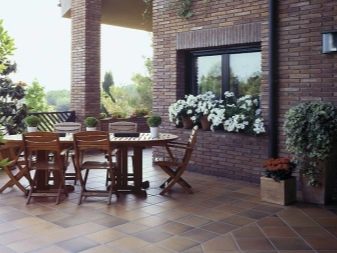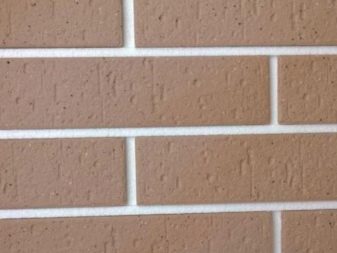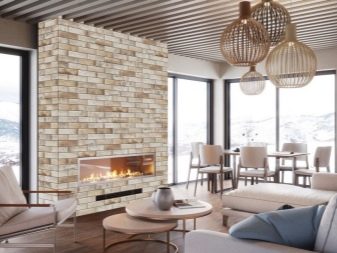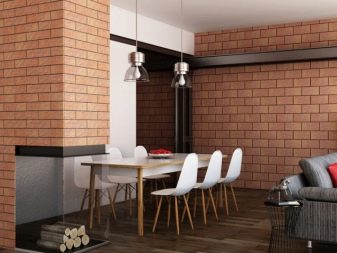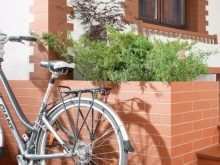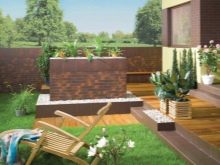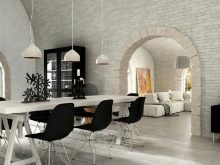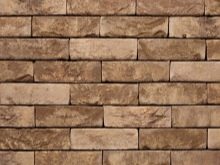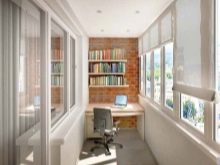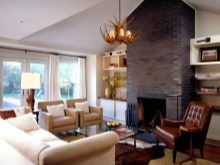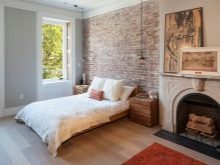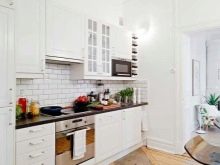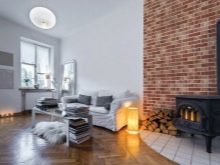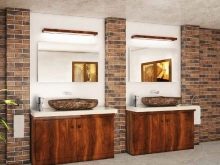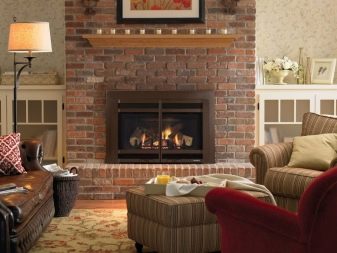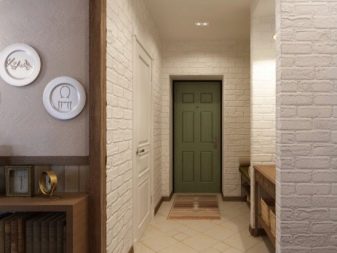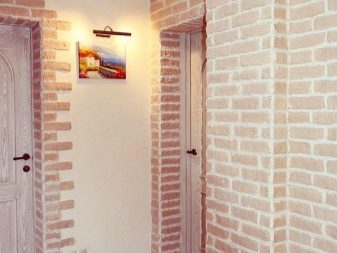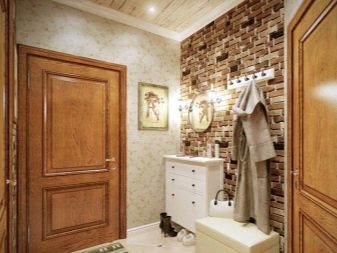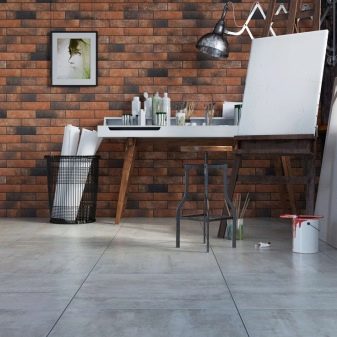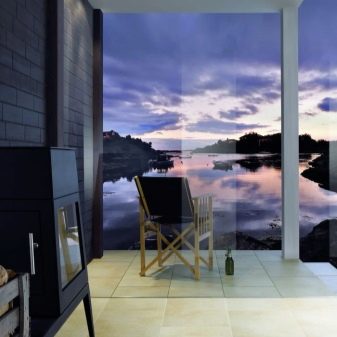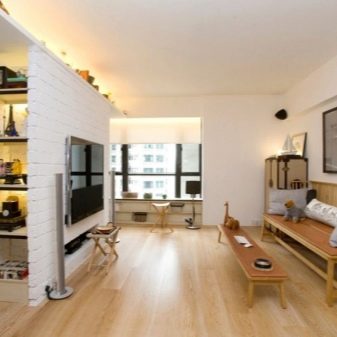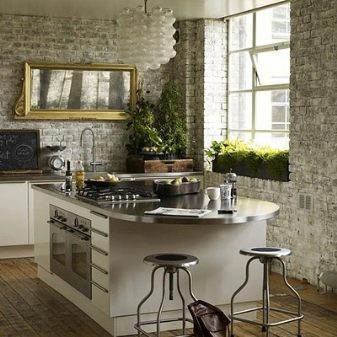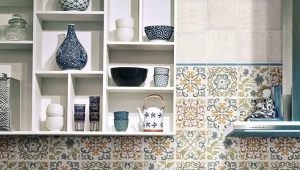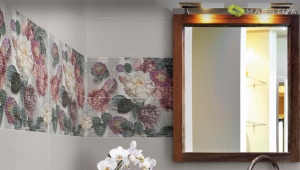Clinker tiles: pros and cons
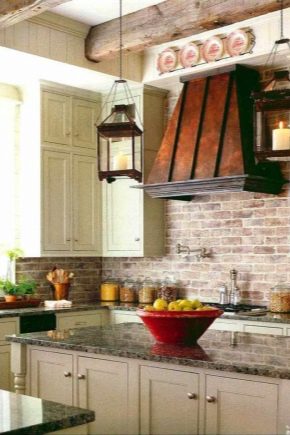
The brick tile is a finishing material, popular today. It is universal, but not everyone knows how to properly use it for decoration. In addition, it has a number of advantages and some disadvantages, which are important to study before choosing.
What it is?
Some people think that clinker is a new finishing material, which is characterized by unusual characteristics and innovative production technology. But this is not true. The brick tile is a popular finishing material which was popular already for many years. Just not everyone knows its correct name. It allows you to return to old traditions and reminds works of old masters. External this finishing material is similar to a laying from a brick or a stone.
The history of clinker tiles is very long.When in the 19th century in European countries there was a sharp increase in demand for building materials due to an increase in urban construction, craftsmen had to look for new types of finishing materials, as there was simply not enough stone and brick, the quarries were overloaded. Then the masters come from Germany came up with the technology of production of a new material, which was a clay burnt under high temperatures. And for this purpose, not ordinary clay was used, but a selected, high-quality type of material.
Bricks were made from clay, which, according to their quality characteristics, were even better than the original counterpart. They were waterproof, durable and of high quality. In addition, they were used for the construction of roads, squares, socles, walls of street buildings and much more. And such buildings remained for a very long time.
And now the same technology is used in the production of clinker tiles. Of course, it is produced in factories using new equipment, but in general the process remains the same: clay is taken and fired at a temperature of more than 1200 degrees.Sometimes minerals and some other additives are mixed into it, which improves its quality characteristics.
Modern clinker tile is dense, and its texture is uniform. If you hit this material with a hammer, you will hear a long, clear sound. It is from this that the name of this material originated. "Klink" from Dutch is translated as sound or ringing. Hence the material got its name. From the German language, the word "clinker" translates as brick, so some people think that this word is of German origin, just like the material itself.
At first, the clinker tile was brick blocks, now it is produced in the form of a tile. It is used for cladding buildings. It is able to imitate natural brickwork. The facade, trimmed with clinker, externally will not differ from the brickwork. Now manufacturers represent a wide selection of clinker tiles. Moreover, the models have a specific purpose and are necessary for different types of construction and decoration. This is because The material is universal and therefore suitable for many finishing works.
What is it for?
Clinker tiles are often used for cladding houses and industrial buildings. It is able to give an aesthetic look to any facade, as well as protect it from negative factors. The clinker is used to finish an already prepared and leveled surface to make the appearance of the brickwork. Also, clinker can be the primary material for the creation of solid panels that trim the facades. It is used in various forms for decoration.
In addition, clinker is used even for wall insulation. In private houses, they often trim the external pipes of the house, as well as other ventilation systems. They are decorated with houses and other buildings of concrete, stone, wood and other materials.
With its help they make beautiful ladders and other elements of landscape design on the dacha plots, lay out garden paths, as well as the floors in the gazebo or on the terrace. Another purpose - facing fencing artificial water sources such as a fountain, pond, stream at the dacha. With its help also trim the pool.
Clinker is most often veneered in the house with fireplaces or stoves in the bath. This is due to the strength and reliability of this material.She trim the walls inside the production, as well as residential premises. In addition, in garages, car repair shops and other industrial premises where a large load falls on the floor, with its help even floors are made. Thus, the range of application of this finishing material is very wide.
Special features
The brick tile has a number of advantages which attract buyers and cause its popularity. It is very durable and wear resistant. Such material is almost impossible to damage, it is resistant to external influences of a technical type and many natural factors.
The great advantage is the durability of this material. But this applies only to those cases where its installation was carried out correctly and efficiently. The term of operation is not limited in time as such tile practically does not wear out.
Over the years, the material looks practically unchanged, especially if it is provided with the right care. Moreover, these advantages apply to those cases when the tile is in adverse conditions.
Once trimmed element of the facade will not lose its decorative qualities.The material is completely eco-friendly and natural. In the process of its production, manufacturers do not use harmful substances to human health. And the tile does not emit harmful substances and when exposed to elevated temperaturesas it happens with many other materials.
The clinker tile has a low level of water absorption. This indicator does not exceed 3%. Thus, this tile can be used in almost all areas, including where the humidity is too high. Therefore, with its help trim baths and pools.
The advantages is the ability to choose one or another type of product depending on the purpose of the room where this tile will be used. You can save money and buy a model for the decoration of residential premises, which, for example, will have a lower level of water absorption.
The clinker tile is fire resistant. She is also not afraid of temperature drops. From this, it does not spoil, does not change its external characteristics. It is considered to be frost-resistant material and is able to withstand more than 150 cycles of complete freezing and thawing.Thus, it can be used outdoors in all weather conditions, as well as for finishing walls or floors in unheated rooms. The tile does not burn at all, which once again confirms the safety of this material. Klinker is not afraid of direct ultraviolet rays.
The big advantage is the ability to choose different textures or colors of this material. You can even pick up models of different sizes in the form of small products or large solid panels. You can choose a model for every taste for both external and internal finishes.
The material is chemically inert. It does not give any reaction to the effects of chemical irritants, even very aggressive ones. With the exterior of the room, even in conditions of smog or other harmful effects, the tile does not collapse.
Clinker is easy to maintain. She does not collect dust on herself. In addition, this factor slows the spread of mosses. Therefore, the facades of buildings will always be clean and neat.
But this material still has several drawbacks, although they are all pretty obvious. Firstly, It should be noted the high cost of this material. He will not everybody can afford. On average, 1 square. m of clinker tiles cost from 1,500 to 3,000 rubles, but manual molding models cost much more. Thus, finishing the house with this material will rise in a round sum. Of course, there are cheaper models, but their quality is usually appropriate. All high-quality products are expensive.
Also of note is the relatively low choice of design options for these products. All types of tiles will look like brick or stone.
Among the shortcomings, many buyers point out the fragility of this coating. This is due to the fact that the technical characteristics of clinker is very similar to glass. This material must be transported very carefully and lay soft elements between the tiles or tightly bind the pile with the tile. Even with a small blow, such a tile can easily break before installation. In addition, the material can easily crack.
A big disadvantage is also considered to be the complexity of its processing during installation: in some cases, it is necessary to cut the clinker tile for joining, and this is quite difficult to do. At the site of the cut may appear cracks or chips.Doing it yourself is almost impossible without spoiling the cut of the material.
Specifications
Since clinker completely imitates brickwork, its dimensions are generally consistent with this material. The main difference is the thickness of the finishing material.
Types of clinker tiles may vary in their thickness. It depends on the purpose of this material, as well as on where it will be used: inside or outside the building. Manufacturers are clinker thickness of 5, 7, 12, 17 mm. But the most popular models are 7 mm thick.
For the interior decoration select the most delicate products, because they look more aesthetically pleasing and do not overload the room. But for the exterior trim try to acquire the most durable thick models.
In addition, the thickness of the tile should depend on climatic conditions. The lower the temperature in the region falls, the thicker the clinker tile should be. As a rule, the standard size of clinker tiles according to GOST is 11.5 cm by 24 cm. But you can find other options for the formats of this product. Moreover, they differ depending on the manufacturer. Domestic manufacturers present models in the following size range:
- L-NF –29.5 × 7.1 × 1.5 cm are long models;
- WF –21.5 × 6.5 × 1.5 cm - medium size models;
- WDF –2.1 × 0.5 × 0.2 cm - models of small size.
Tiles manufactured in Europe have different parameters. As a rule, its length also remains 240 mm, but the thickness starts from 9 mm. European type clinkers differ in width. Manufacturers represent models of width:
- DF - 5.2 cm;
- 2DF –11.3 cm;
- NF –7.1 cm;
- RF –6.5 cm
You can also find American-made clinker. Its standard thickness is 1.5 cm. The length varies from 19 to 30 cm. But they may differ in width. There are models of 5.7, 7 and 9 cm wide. Thus, when purchasing different tiles from different brands, it is necessary to calculate the cost of materials per square meter. This figure varies from 34 to 73 elements per square.
Kinds
Clinker tiles are distinguished by characteristics such as its texture. So, manufacturers present several different options:
- Smooth clinker. Most often it is used for interior decoration, but sometimes for cladding facades of residential buildings. This tile is the most unpretentious: for her the easiest to care for, it does not clog dirt and dust.In addition, it is the most subtle. In general, such a coating looks monolithic and therefore harmonious.
Raised. This type of clinker resembles a brick, not only in appearance, but also in its texture. It is heterogeneous and has some bulges. In addition, the embossed clinker in texture can be similar to stone or other interesting natural finishing materials. But it is necessary to take care of such tiles regularly, since dirt accumulates in the relief elements, over time, the product can get very dirty, which will significantly reduce its presentability.
- Antique. This is the most prominent type of tile that has artificially created chips, cracks and other visible defects that make the texture of the older. This tile is used to finish the facades of buildings or some elements of a semi-antique room, as well as for the restoration of famous architectural buildings.
Also, there are different types of clinker, depending on the exterior finish and texture:
- Glazed tile. This is a smooth tile with a slight glossy sheen. Most often used for decorative finishes.
- With rough edges. Such clinker is used for exterior or for interior decoration. It has a rough texture and looks more natural, which allows it to completely repeat the brickwork.
- Untreated models. Such clinker is suitable for finishing tracks, industrial premises. Also, some use it for the decoration of antique rooms. It looks as natural and simple as possible.
Clinker can be presented not only in a block format, but also in the form of panels.
Clinker Thermopanels
Separately, it should be noted tile in the form of facade thermopanels. This material is already mounted elements of the tile. Thus, it is possible at times to simplify its installation. During production, the clinker is installed on the finished facade thermopanels so that it can be mounted in this form on the frame of the house. This skin will take a little time, but it will also look presentable. The tile is pre-installed in a thermopanel - polystyrene foam plate with ceramic lining. You just have to prepare the frame and all surfaces, fix the panels on them and do the grout.
The heatpanel allows you to "kill two birds with one stone": it will warm the house and make its facing beautiful and decorative. In addition, the cost of such panels is quite low and starts from 1,500 rubles per square meter. m
Thermopanels are a two-layer material that includes a warm insulator and clinker. As a rule, the role of a heat insulator is performed by polyurethane foam, polystyrene foam or mineral wool. On average, the thickness of the insulation layer is from 3 to 10 cm. Polyurethane models have a high thermal conductivity and good density. Moreover, such panels do not rot at all.
The panels are mounted spike into the groove, therefore the coating becomes hard and stable. He is not blown by the wind and does not chill frost. Thanks to such clinker tile thermopanels, the cost of heating a house can be reduced by up to 50%.
Since such panels are quite large, the number of seams on the facade of the building becomes minimal. Thus it is possible to reduce the number of cold walkways. The manufacturer assures that the service life of such panels is at least one hundred years. But the thermopanels are solid, so do not bend. That is why it is necessary for them to prepare the foundation well.
Thermopanels have different quality characteristics and depending on where they are installed.So, basement panels are not so large, but their thickness is rather large. Front thermopanels, on the contrary, have the big sizes, but not such big thickness.
Depending on what such construction consists of, the heated clinker panels are divided into:
- bilayer - they include only insulation and clinker;
- three-layer - in them manufacturers include a substrate of moisture-resistant OSB plates, which make them more rigid and durable;
- four-layered - the fourth is added to the previous three layers - a refractory substrate between the layers of insulation and OSB.
Clinker can be glued with a special composition on such panels. Glue is used only if the clinker is attached to polystyrene foam. Thus, the panel initially already has a recess where the tile elements will be fixed with the help of glue. They are fixed under high pressure so that the panel fully seizes.
More reliable models are extruded type. The clinker is first placed on the form, it is covered with foamed polymer, and then left under high pressure to heat insulation completely.
Clinker Unheated Panels
They are presented in the form of a sheet material that is durable and resistant to bending, on which clinker elements are fixed in the form of brickwork. The clinker is attached to the glue and holds quite firmly. The front of the facade is represented as a constructor, in which the adjacent elements continue the previous ones. There are also brackets between the rows that allow such panels to be fixed to the wall.
The role of the substrate for such clinker tiles is performed by fiber cement, chipboard or glass-magnesite plates. All these types of substrates have a uniform structure and are quite durable and moisture resistant. In addition, they provide good sound and heat insulation. At the same time, the design does not become heavier, since all these types of panels weigh quite a bit.
Usually tiles on such panels are applied with polyurethane glue. It provides a good grip and secure the tiles on the surface. Such clinker panels cost from 2,000 to 3,000 rubles per square meter. m
Thus, the cost is about the same as the cost of individual standard elements of the clinker tile, but it also greatly simplifies the installation of such a coating.
For interior decoration from the inside using glass-magnesite plates with clinker. They have a very small thickness - no more than 8 mm. At the same time, they are resistant to temperatures, chemicals, and ultraviolet rays. Also This material will provide good noise insulation, which is why they often make the walls in the rooms.
It also retains heat well. Such a variant of the plates is universal because it is very flexible. That is why it can be used to finish coatings that have some defects. The cost of these panels is about 3,000 rubles per square meter. m
Manufacturers even provide the opportunity to make an individual order of such panels, in which you can reflect any option of laying tiles. So, you can choose the type of calculations, texture and color of the clinker.
You can even make models with mosaic styling. But such differences greatly increase the cost of finishing materials.
Design
Many people believe that the design of decorative clinker tiles is uninteresting and boring. But it is not. For example, an artificial gypsum tile can look very interesting and even more original than its natural counterpart.In addition, manufacturers present a wide range of models with different textures, as well as interesting color solutions. Brick laying due to this does not look so cold and not at all monotonous.
Models with an antique design simply fascinate. They look stylish and natural. Separately, it should be noted models, the design of which has a specially underlined uneven firing of bricks. On it alternate light and darker areas. This design looks stylish and interesting. Such a finish will resemble a noble old times. In many interiors, it looks more elegant than simple sleek modern models.
Very popular are models that have additional elements in the structure of the material that imitate pieces of coal, fragments of stones and minerals. Typically, this type of material has a more interesting variety of texture.
Manufacturers represent not only the traditional brick color of clinker, but also more interesting options. So, it looks bright red and white clinker tiles. Such decisions attract attention and fascinate.And the white brick tile can be ideally white, and can have a yellowish shade.
Ivory clinker looks quite elegant. Especially it concerns the interior design in the style of Provence.
Yellow clinker tiles will help to make the house more comfortable. It will fill it with warmth and make finding it more comfortable.
The black clinker tile looks very restrained and stylish. This is a great solution for interior decoration in a modern style, such as high-tech, loft, minimalism. In this case, the grout for these models choose the same black.
The design of the entire coating as a whole is affected by the grout color. It may be similar, or it may be a couple of shades lighter or be contrast. Red clinker with a white grout looks most clearly.
Some models of a brick tile have coloring in weight. Such coatings are painted not only outside, but throughout the texture. If the tile is damaged, its color will not change. The coating will look even more vintage and unusual. Decorative coatings with coloring in the mass do not deteriorate due to abrasions and scratches. Just in the production process, such clay is painted in different shades.
Very interesting is the design of decorative tiles from the clinker for the bath. It perfectly replaces ceramics and looks very stylish. For the decoration of this room is often used glazed tiles. Moreover, to cover, you can choose both transparent and colored glaze. Such products look more bright and modern.
The design of the tile may vary depending on the size of the bricks. The standard is the size of a regular brick, but there are also larger or smaller models.
For decoration of modern interiors, small narrow clinker is used, and for more traditional styles - standard models or products with a greater width.
Tips for choosing
Choosing a clinker tile, initially calculate the required amount of material. To do this, you can use a special program or calculate the area of the plot, which is planned to do this material. Keep in mind that the consumption of materials will be affected by the planned thickness of the tile joints. Especially this rule applies to cases where a large surface area is finished with clinker tiles.
Try to get a tile with a margin. This is necessary in order to be able to cut it off at the joints of adjacent walls or to replace elements in cases of damage. Thus, about 10% more clinker should be purchased for finishing.
When buying, try to check whether the package of tiles contains broken items. This is very important because this material is fragile, but at the same time it is expensive. Subsequently, it will be quite difficult to change.
If you get clinker for facades, then it is important to pay attention to its characteristics. Models for the facade cost from 4000 rubles per square meter. m, so you should calculate the cost of such coverage. When buying, try to choose between popular foreign brands that represent proven quality models. Many of them give a long warranty. Although domestic clinker tiles are cheaper, their quality is generally lower.
When choosing a clinker tile, keep in mind that interesting models with embossed texture are much more expensive, but are not so practical. In addition, the maintenance of such clinker will require additional costs for its processing by the master.Although outwardly such a coating looks presentable, but it must be maintained in good shape.
Choosing clinker, pay attention to its color. It must be in harmony with all elements of the building, when it comes to exterior decoration. And this applies not only to the design and color design of the building, but also to its architectural features. That is why when choosing it is better to ask for advice from a designer or architect.
Try to pick up clinker so that it matches the design of the roof and does not look too bright. Contrast options look tasteless.
When purchasing clinker, you also need to buy an adhesive mixture for attaching these elements and the grout, with which you will process the seams. As for the glue, in this case a longer-lasting frost-resistant coating, designed specifically for this finishing material, is more suitable. It is better to choose glue compositions for clinker that can withstand more than 50 cycles of freezing and defrosting. Thus, you will provide a more reliable fastening of finishing materials to the facade of the building.
Grouting is also an important element, so you need to pay attention to its quality and color. It should be able to compensate for the thermal expansion of the tile.As for its color, it must be in harmony with the tile.
But in some cases acceptable contrasting grout options. It is important that it favorably emphasizes the beauty of clinker.
If you are planning to do the cladding of the building itself, then it is better to look at the facade panels with clinker tiles. In this case, the most practical will be thermopanels, since they provide an additional layer of thermal insulation. In addition, it is much easier to stack them independently than piece clinker.
Manufacturers and reviews
Now one of the most popular manufacturers is the brand. Stroeher from Germany. It represents the models with the highest level of quality. Many collections are stylized antique, but they have a small glossy sheen. This coating looks luxurious, and care for him is simplified at times. Due to the peculiarities of the coating, the dust does not linger and is easily washed off with water. The manufacturer also presents custom models with a length of 44 by 5 cm. With their help, you can make original and unusual styling. But the cost of this product is quite high.
Among the buyers is popular tile brand Houson which is produced in China. Although usually Chinese tiles are considered to be fairly inexpensive and of poor quality, in this case the brand proves the opposite. Clinker from this company has a lot of positive feedback. This product is in great demand in Russia.
In terms of quality, it is not worse than German clinker, but its cost is several times lower. The fact is that the manufacturer does not charge for transportation services, as is usually the case with models from Europe. It represents a wide variety of design options and colors of such products. In addition, tile brick slightly differs in format from domestic and European indicators. Models are presented in sizes 20 x 6 cm and 24 x 6 cm.
Polish brand is considered quite popular. Cerrad. It represents the models of tiles that are made using dry molding technology. The material in its quality and appearance is similar to porcelain. It is most resistant to mechanical stress and external damage. And the cost of these models does not exceed 1000 rubles per square meter. m. That is why such models are in great demand.Buyers point out that such clinker tiles are very durable and of high quality.
The brand Opoczno - This is another Polish manufacturer that manufactures clinker-type tiles designed for facades and facing the space around the structures. With its help, customers often trim the steps, paths, as well as the floors of the verandas. This tile is also manufactured according to the technology of dry compacting and has a high-quality and eco-friendly composition.
Clinker tiles Gerrard is very popular among buyers. This is due to the fact that the manufacturer represents not only standard models of clinker for bricks, but also products for wood, as well as for concrete. With its help you can finish the floors and facades of buildings, steps and paths. The manufacturer also separately presents models for interior and exterior. Customers write that with its help they even trim window sills and the space around the windows. Also, this manufacturer is a separate line of clinker tiles for the pool. That is why such models are in great demand.
In Spain, the brand represents a good tile Exagres. And you can choose as a color model of a large size for decorative trim, and standard samples.
Popular hand-molded facade tiles from the brand Vandersanden. These inexpensive brick samples are very popular because of the good price-performance ratio.
In Italy, the brand KlinkerSire makes models of extruded type which have the low price and small weight. Of the minuses, buyers call only the fragility of these coatings.
Beautiful examples
Clinker tiles are now used to decorate various interior elements. As a rule, this is a fragmentary finish: it decorates one of the walls or only a part of it. In order to make a beautiful finish using clinker indoors, you need to follow a few tips. In the interior it is necessary to choose one accent wall and decorate it with clinker.
This is a great solution for a bedroom in country style. For example, you can finish this way the surface of the wall near the head of the bed. And clinker can be both dark and light.
With such finishing one room, you can follow the approach of uniform design of all other rooms, making an accent wall of clinker in each room.
As for the kitchen, it is also often used clinker.But in this room with his help often trim a kitchen apron. This is an excellent solution for this area, because clinker makes the kitchen more stylish and modern, while it is well tolerated by all the effects of temperature and humidity, which are characteristic of the apron area.
In the interior, clinker tiles are also used for zoning. So, with its help you can divide the room into different areas, for example, the kitchen in the dining and work area. And in the kitchen area, you can lay out the apron with light clinker, and make the dining area more comfortable by decorating it with classic clinker under the brick.
In the interior of a classic living room will look great fireplace, decorated with clinker. Thus, you can arrange not only a real source of heat, but also decorative, artificial. This traditional design looks very stylish.
Clinker tiles are often used in the hallway or in the corridor. The corner model is suitable for the design of the lower part of the walls at the entrance, since it is there that the surface is most often exposed to splashes, dirt from shoes. It will be easier to clean the hallway, while such a design move looks advantageous.
In the corridor, you can make an imitation of brickwork near the doorway. You can complement this design with a clinker finish of windows, columns, or accented angles. The clinker tile allows you to create a trendy and contemporary interior in a loft style. It can be used to finish all walls and even floors. Clinker is a characteristic feature of the loft style.
Clinker is also used in high-tech and even gothic interiors. Bright clinker fits perfectly into the interior in the style of Provence or Country, because it looks natural and natural.
How to lay a clinker tile, see the following video.
